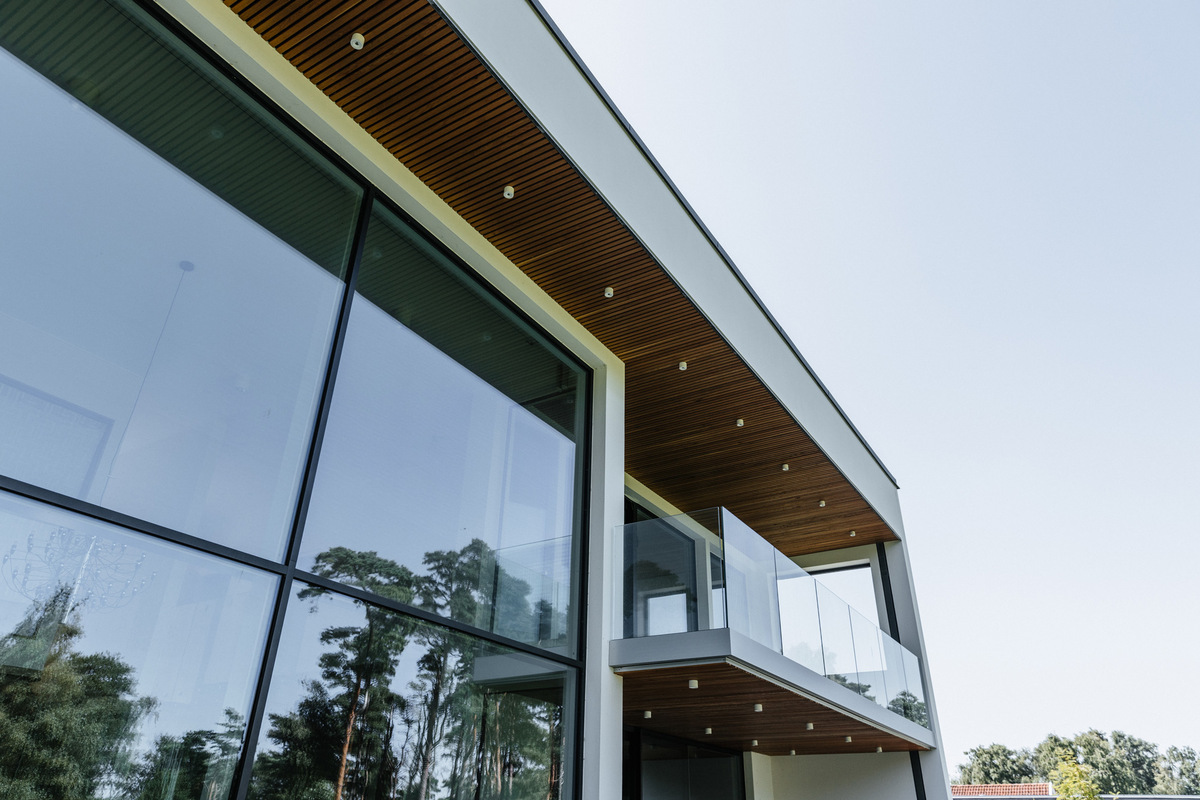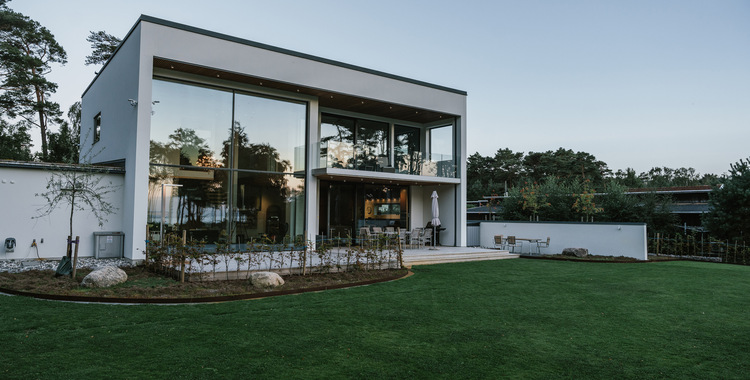Tomas Stringdahl is one of the most versatile Swedish design-ers of his generation. His latest work, Villa Marita in Båstad, is inspired by Australia where natural elements are given the space they deserve. The boundary between outside and in is blurred and becomes almost non-existent as large glass sections invite the sea, sand dunes, and nature to become part of the interior. Like a moving wallpaper or painting. This, together with a carefully planned acoustic solution, creates harmony, something that’s consistent in all of Tomas’s work. What was the inspiration for your latest project Villa Marita?“I was contacted by a couple who asked me to design their holiday home in Båstad. During the winter months, they live in Australia and therefore wanted their home in Sweden to be influenced by the Australian feeling and atmosphere. That translates into white and bright with large windows, a plastered stone floor, white-plastered stone walls inside, and a similar facade outside. With a ceiling height of three metres, hard and cold materials, open spaces, and a lot of volume, the acoustics become extremely important when it comes to ensuring a cosy and atmospheric environment.” Are acoustics a permanent feature for you when designing villas?
“Always! Not only because the wooden rib solutions that
I work with on the roof are very stylish, but also because it’s something that the hard surfaces and large windows of modern architecture require. Good acoustics are actually quite anonymous and rarely something you think about. No one ever comes to my house and says ‘wow what great acoustics you have in your house!’ (unless you’re occupationally inclined like I am!). A poor and unpleasant sound environment, on the other hand, stands out all the more, which overshadows the beautiful design. I’ve been in too many well-designed luxury villas where mil-lions have been spent on basically everything except the sound environment. That’s why I always suggest an acoustic solution because I know how crucial it is.”

What did the acoustic solution look like for Villa Marita?
“The inner ceiling is clad in solid oak, like wooden slats, with Akustikmiljö’s sound-absorbing EcoSUND material underneath and their product DUK, which is a surface layer between the sound absorber and the wooden slats. Something that works very well in ribbed ceilings in particular is lighting in the form of rails where the lights run linearly along the ribs. These can be designed in different ways, such as in the form of crown lamps and spotlights. The acoustics thus form part of a stylish design solution that also enhances the architecture and the whole feel of the property.” “Good acoustics are actually quite anonymous and rarely something you think about.” Can you tell us more about the Australian-inspired architecture of the villa?
“The house is built in a pared-back, strict, and simple square shape, inspired by modern Australian pavilion homes. The details are important when it comes to making a rather simple house in-teresting. Just because it’s strict and modern doesn’t mean it has to be bare and boring. Other distinctive features for that kind of house are open floor plans with glass replacing much of the wall space, and an indoor-outdoor flow that respects the landscape. It’s therefore not uncommon to ‘angle’ the building to frame the views of the local surroundings. In Villa Marita, I designed win-dows from floor to ceiling with the largest glazed area measuring four panes of 6.5 x 6.5 metres. This is big, even in my world.” Tell us a little more about the details and design solutions for Villa Marita.
“With the building’s hard and cold materials, I wanted to get a lot of wood into the kitchen, stairs, and ceiling to create a sense of cosiness and harmony. The wooden slatted roof also extends all the way out, which gives a cosy feel even on the patio and terrace. Outside, I’ve worked with recessed downpipes that serve as a nice detail in the facade. Round natural stone surrounds the house to soften the angular shape.” The rounded wooden staircase with glass railing looks
like a project in itself?
“That it was! The staircase, with independently suspended steps, runs around a central wall in the house, so we had to make the glass curved like in a large radius. It’s quite unusual and compli-cated to work with curved glass, and this was actually the first time I’ve used that method for a railing. Next time it’ll probably be in the form of a curved corner window for a building. That’d be awesome!”

Australian-inspired villa in Båstad with the sea and nature as next-door neighbours
Take a closer look and find inspiration.





